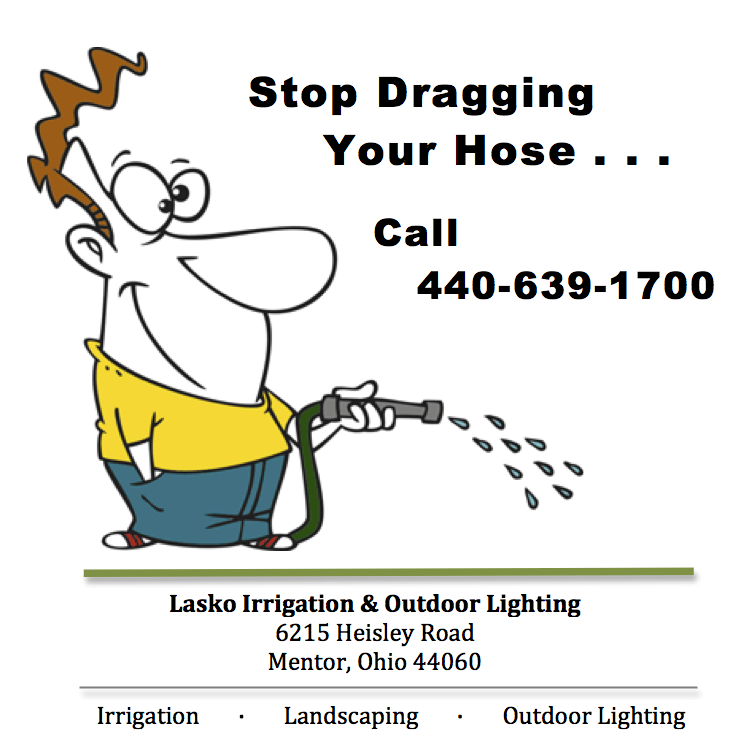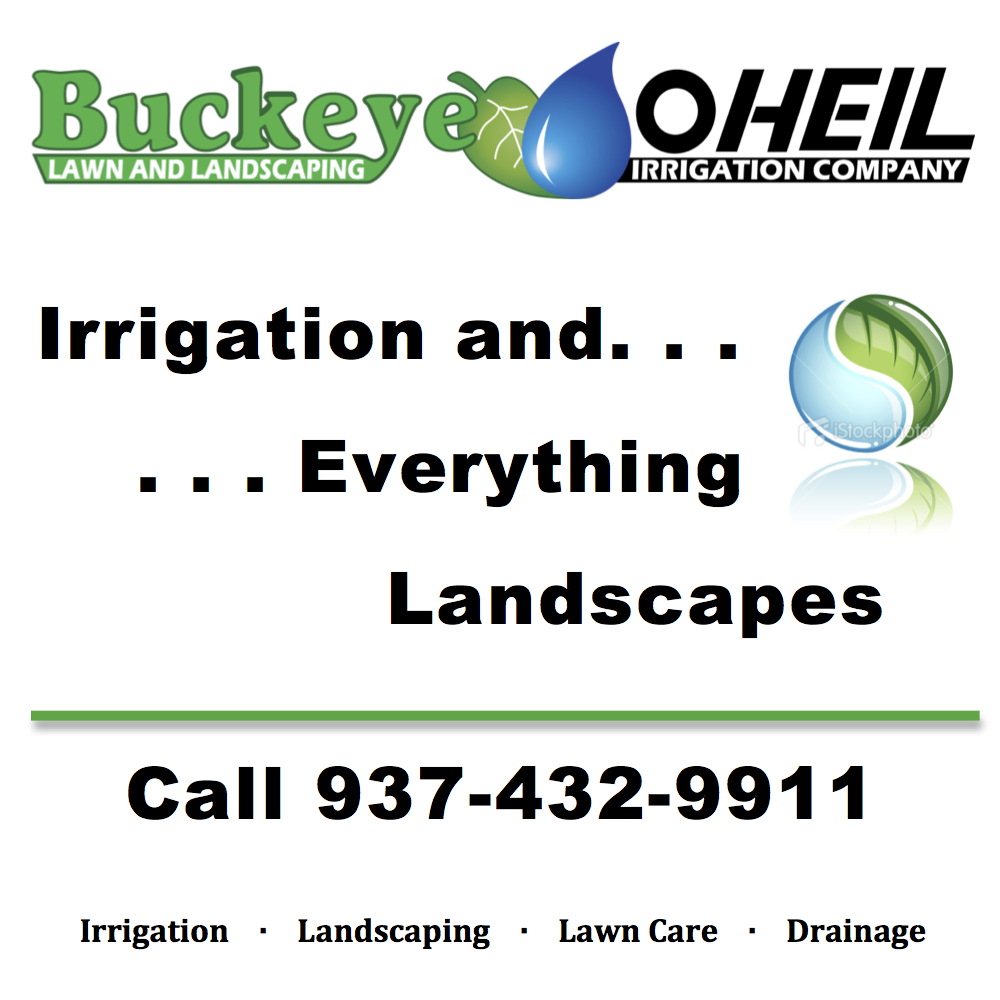
by Tom Barrett | Jul 9, 2025
Summer’s the Peak Time to
Promote Service Agreements
It’s mid-summer, and your irrigation and landscaping crews are busy.
Customers are enjoying the fruits of your labor: healthy, lush landscapes and enchanting outdoor lighting under summer skies. Now’s the time to promote the benefits of annual service contracts.
Prepare Now for the Leaner Months Ahead
Maintenance can be the key to survival in the green industry. Offering your clients an annual service contract allows you to augment your month-to-month income by maintaining their landscapes year-round. The increased cash flow will help your company withstand the leaner months of the year.
Service agreements go beyond annual winterization and start-up services. With a contract, customers pay a monthly fee for you to perform general irrigation and landscaping maintenance on a regular basis.
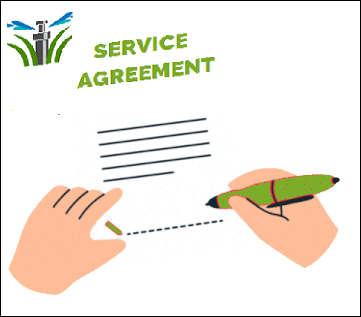 Service Contract
Service Contract
Do’s and Don’ts
DO: Try selling service contracts on every irrigation or landscaping install.
DO: Make it easy for customers to understand the terms of a service contract.
DO: Make your service contract scalable, budget-friendly, and tailored to the customer’s needs.
DO: Stay in touch with customers who don’t yet have a service contract.
DO: Explain the bottom-line costs with and without a service contract.
DO: Provide an automatic payment option.
DON’T: Hesitate to offer a service contract to current customers.
DON’T: Sell service contracts before you’re ready to deliver the services.
DON’T: Assume some customers aren’t good candidates for service contracts.
Your business enjoys a stable, reliable year-round income, landscapes are kept in tip-top shape, and potential costly repairs are avoided. It’s a win-win for both you and your clients.
Irrigation Services to Include
In addition to winterization and spring start-up, your irrigation service contract should include programming controllers to prevent underwatering in July and overwatering in November. Many homeowners will not make this adjustment on their own, but it can save a significant amount of water, reducing their water bill and conserving resources.
Other services to include are:
- Monthly inspection of the controller
- Updating the time and date.
- Checking all wiring connections, including rain and soil-moisture sensors
- Replacing the backup battery.
- Adjusting the watering schedule during times of drought, to reflect the allowed watering days and times
- Ensuring valve boxes are clean and free of debris
- Testing the backflow device (certified professional only)
- Activating each sprinkler zone and checking the system for damage such as:
-
-
- Leaky pipes, valves, or seals
- Broken, missing, sunken, or tilted sprinkler heads
- Clogged nozzles
Landscaping Services to Include
Along with routine lawn mowing and trimming, landscaping contractors should consider including the following services in their maintenance contracts:
- Soil testing, fertilization, and weed control
- Core aeration, overseeding, and post-aeration care
- Integrated Pest Management and disease control
- Seasonal clean-up, mulching, and winter preparation
- Plant selection and installation
- Pruning and trimming trees and shrubs
- Snow and ice management (if applicable)
–Article Continues Below–

Lighting Services to Include
If your irrigation and landscaping business includes outdoor lighting services, you’ll want to include lighting maintenance in your service contract. Specifically:
- Cleaning all fixtures and lenses, and removing debris to avoid light blockages
- Checking for moisture and placing desiccant packs where necessary
- Replacing bulbs according to the fixture’s wattage and voltage requirements
- Repairing or replacing exposed wires
- Reburying exposed cables
- Realigning fixtures to ensure proper illumination
- Adjusting the lighting timer to accommodate seasonal changes
Other Details
When drafting your service contract, there are multiple general details that must not be overlooked. Such as:
 Need Help?
Need Help?
Plenty of online resources are available to assist you in drafting the best service contracts for your business. Check out the following links:
Hindsite Software
Upcounsel
Law Depot
Nolo
- Contract beginning and end dates
- Amount of monthly fee and payment schedule
- Customer address and property description
- Customer specifications, such as grass height, use of organic products, etc.
- Which state’s laws apply to the contract
- A severability clause
- Signature and date lines
The Bottom Line
Annual service contracts enable proactive customer service and provide the cash flow your business needs to sail through the off-season. Year-round irrigation and landscaping maintenance is a natural add-on service opportunity, resulting in happier clients and a more lucrative bottom line for your business.
Sources:
Featured Image: Adobe, License Granted
Turf Magazine
Alliance for Water Efficiency
Lighting Warehouse
Commercial Integrator

by Tom Barrett | Jun 11, 2025
Why You Should Consider Adding
Drip Irrigation to Your Service Menu
“Drop by drop is the water pot filled.” – The Buddha
Did you know…
- The market for drip irrigation systems was valued at $4.8 billion in 2023.
- The drip irrigation market is projected to reach $14.8 billion by 2030, growing at a CAGR of 10.77%.
- The residential sector holds a significant share of that market.
If your irrigation business does not currently include drip irrigation design, installation, and maintenance, maybe it should. Drip systems provide low-pressure, precise results by delivering water directly to root zones and are also ideal for accurately irrigating slopes and oddly shaped areas.
“We Are Smart Irrigation”
The theme for Smart Irrigation Month 2025 is “We Are Smart Irrigation.”
It’s time for irrigation professionals to raise awareness about how smart irrigation products, technologies, and practices positively impact our communities.
Here’s how you can help:
- Promote Smart Irrigation Month on social media.
- Add the Smart Irrigation Month logo to marketing and business materials.
- Submit a Smart Irrigation Month press release to local media.
- Petition your city or state government officials to proclaim July as Smart Irrigation Month.
By helping customers understand the importance of water conservation and sustainability, we can make a difference.
As if that weren’t enough, according to the EPA, drip irrigation uses 20% to 50% less water than conventional sprinkler systems. Promoting the advantages of drip systems to your customers is a great way to support Smart Irrigation Month. (See sidebar, “We Are Smart Irrigation.”)
Drip Irrigation Basics
Unlike sprinkler systems that deliver gallons of water per minute, drip irrigation slowly and steadily delivers gallons of water per hour directly to plant roots, minimizing runoff and evaporation. As a result, less water is required.
A drip system consists of the following essential components:
- Water valve
- Pressure regulator
- Filter
- Tubing adapter
- Dripline (PVC or polyethylene tubing)
- Emitters
- Electronic controller
- Backflow preventer
Numerous lateral lines for a drip irrigation system can be attached through various headers. Each line is fitted with water-dispersing emitters, which can then be buried or covered with mulch, gravel, or stone (to protect from rodent damage).
Point Source vs. Inline Drip Irrigation
Individual emitters can be placed at specific locations along the drip line (point source irrigation), or you can purchase lines with pre-installed emitters spaced at regular intervals (inline drip irrigation).
Point source irrigation allows for targeted watering, while inline irrigation delivers water uniformly along the entire length of the drip tube.
Because emitter output rates vary from a half gallon to two gallons per hour, choosing the correct emitter is critical. Fortunately, emitters with different output rates may be installed on a single dripline, allowing irrigation of plants with distinct watering needs that are located closely together.
You could also opt for adjustable emitters that allow you to regulate the water flow rate from a steady drip to a slow stream. Experts suggest spacing the emitters about 12 inches apart with 18 inches between lines to achieve a precipitation rate of about 1 inch per hour.
–Article Continues Below–

Multiple Applications
Drip irrigation systems are mainly used for watering flower beds, gardens, and unusually small or unique landscape areas. They’re ideal for xeriscapes and particularly well-suited in applications where low water pressure and flow are all that’s available.
But they can also provide supplemental irrigation to areas already incorporated into sprinkler zones. In addition, drip systems can be used to irrigate both new and established lawns. For a new lawn, simply install the dripline before sodding or planting grass seed. With an established lawn, the drip line is trenched into the turf.
Drip System Maintenance
Drip systems are generally easier to maintain than conventional sprinkler systems because the emitters and dripline aren’t deeply buried. However, identifying needed repairs can be trickier. While broken sprinkler heads are easily pinpointed, with a drip system, you must look for browning or wilted vegetation.

Selling It
Hands-on gardening buffs are particularly good candidates for a drip irrigation system, which allows them to care for their landscape plants in their own way.
But drip systems offer multiple benefits to all your customers. Specifically:
Better plant health. Water penetrates slowly and deeply into the soil, placing moisture precisely at the roots where it’s needed. Plants proliferate when irrigated uniformly without stress created by water deprivation.
Less waste. A sound drip system directs 90% of the water into the soil with little evaporation loss.
Environmental benefits. Drip irrigation produces less erosion and minimal risk of runoff landing in area streams and rivers.
Reduced plant disease. By keeping foliage dry, drip irrigation reduces the incidence of diseases such as powdery mildew that thrive in damp conditions.
Reduced water damage. Drip systems virtually eliminate the risk of “sunburn” that can sometimes result from aerial watering.
Weed control. Drip irrigation systems place water directly around the plant, limiting weed germination.
Incorporating a flow meter in the system addresses this issue. The sensor will notify the controller of any flow irregularities and send an alert to the homeowner’s smartphone. Wireless flow meters are both inexpensive and easy to install.
Drip irrigation systems should be checked at least three times a year, depending on location and water source, to ensure proper operation.
Like conventional sprinkler systems, drip systems must be winterized. When blowing out the lines, carefully gauge the air pressure to keep the emitters from popping off. It’s also a good idea to store the backflow preventer indoors for the winter.
Inspect all components for cracks and splits before spring start-up.
Expanding Market
Climate experts predict that drier days are ahead for most of the country, increasing the popularity of drip systems.
Due to their greater efficiency, homeowners with drip systems may be exempt from water restrictions during droughts. In addition, the initial expense of a drip system is eventually offset by the cost of water savings.
Drip irrigation represents an expanding market and is worth adding to your menu of services.
Want to Learn More?
If you’re ready to learn more about designing and installing drip systems, Udemy offers the following online courses:
Drip Irrigation System – Design, Installation and Maintenance Advanced Drip Irrigation – Field Installations
Sources:
Featured Image: Adobe, License Granted
Markets and Data
Wolf Creek Company
Irrigation & Green Industry

by Tom Barrett | May 7, 2025
Conventional Irrigation Controllers
Still Going Strong
In a world of cutting-edge technology, you may be surprised to learn that standard, strictly time-based irrigation controllers still dominate.
According to experts, basic irrigation controllers represented 65% of the global market in 2024. Millions of these little workhorses are still operating, and many contractors – and homeowners — depend on them. As long as you don’t expect them to make any complicated decisions, you’ll get along just fine.
Plain Vanilla, Please
Basic controllers remain ideal for certain types of landscape irrigation, such as:
 Preventing Cyber Intrusion
Preventing Cyber Intrusion
There are several steps customers can take to improve cybersecurity on their smart home devices:
- Update any software to the latest version.
- Deploy multifactor authentication.
- If multifactor authentication cannot be employed, use strong passwords and change them periodically.
- Keep antivirus systems, spam filters and firewalls up to date and properly configured.
- Limit password accessibility to necessary personnel only.
- Create a backup and recovery plan.
Source: Irrigation Today
- New seed or sod that must be watered at regular intervals with no exceptions. In new housing developments, contractors often install a standard irrigation timer at least temporarily to maintain curb appeal.
- Flower beds that must be watered on a regular basis
- Sheltered container plants
In addition, in areas where water scarcity is not usually an issue – like most regions in Ohio — the advanced features of smart controllers may not be necessary.
Easy Does It
No one can argue that standard irrigation timers are simple and easy to understand. For some customers, particularly older homeowners, you may not even want to offer the option of a smart controller. Configuring smart systems and understanding technical specifications can appear overwhelming for people who are not technologically inclined.
The learning curve associated with new technology is not for everyone. Even some contractors avoid it, if possible. Instead, they rely on the basic, simple units they’ve always used that don’t continually ask them questions. New contractors who were trained using standard controllers may also prefer them.
Some contractors also may view basic timers as more reliable. Moreover, the lower cost makes them an easy sell. For hobby gardeners on a budget, the upfront cost of a smart controller may be prohibitive. Also, for small-scale gardens, it could be overkill.
To address some of these concerns, several manufacturers have begun producing simpler, more user-friendly smart controllers at a lower price. These new devices combine the water-saving features of smart controllers with the reduced price and complexity of basic controllers.
Other Smart Issues
There are several other reasons why a smart irrigation controller may not be the best choice for your customer, such as:
–Article Continues Below–

Privacy Concerns. Some customers may not be comfortable sharing Wi-Fi passwords with their irrigation contractor. Others may find the reliance on technology unsettling.
Hackability. With the increasing sophistication of hacking technology, some customers may be wary of any type of smart home device. (See sidebar, “Preventing Cyber Intrusion.”)
Data Collection. In addition, some smart irrigation systems collect data about gardening habits, climate, and the customer’s location. Even though this information is generally used to optimize the system’s performance, some customers might not be comfortable with this data collection.
Wi-Fi Reliability. Smart controllers depend on reliable Wi-Fi connectivity. In the event of a network outage, they could leave landscapes underwatered.
Time After Time
For the time being, it appears standard irrigation timers aren’t going anywhere. Simple and cost-effective, these classic timers are still a good option for a basic sprinkler system and for customers who prefer an easy, hands-on approach.
They may not be trendy and sophisticated, but they’re reliable standbys that continue to perform like clockwork, time after time.
Sources:
Featured Images: Adobe, License Granted
Global Growth Insights
Irrigation and Lighting
Live to Plant
Journeyman HQ
Top Appliance Picks

by Tom Barrett | Apr 9, 2025
Test Your Knowledge of
This Global Call to Action
Since 1970, April 22 has been designated as Earth Day.
What began as a national effort to raise awareness of environmental challenges has become a global call to action. For Ohio irrigation and landscaping professionals, each day’s work contributes to the greening of our planet.
But how much do you know about Earth Day? Take our quiz and see:
#1. The 2025 Earth Day theme is Our Power, Our Planet™. Which of the following was NOT a previous year’s Earth Day theme?
 A. Trees for the Earth
A. Trees for the Earth
B. Planet vs. Plastics
C. I Have Earth
D. The Solution to Pollution Is Dilution
E. You Are Part of the Solution
Answer: D. “The Solution to Pollution Is Dilution” was a mantra of yesteryear, before scientists became aware of micropollutants that no amount of dilution could irradicate. All the other answers were Earth Day themes of previous years: Trees for the Earth (2008), Planet vs. Plastics (2024), I Have Earth (1971), and You Are Part of the Solution (1988).
#2. Which of the following ecological disasters inspired the first Earth Day in 1970?
 A. The Exxon Valdez oil spill
A. The Exxon Valdez oil spill
B. The Love Canal incident
C. The Santa Barbara oil spill
D. The Three Mile Island accident
E. Both A and C
Answer: C. On January 28, 1969, a massive oil spill blackened the coastline of Santa Barbara, Calif., and placed a national spotlight on pollution. After witnessing the damage first-hand, Wisconsin Sen. Gaylord Nelson and a Harvard University graduate student determined to spearhead the concept of a national day to promote awareness of increasing ecological issues.
The Exxon Valdez oil spill occurred in Alaska’s Prince William Sound in 1989. The Love Canal incident pertains to the 1977 discovery of toxic chemicals in residential areas near Niagara Falls, N.Y. Three Mile Island was the site of the worst nuclear power plant accident in U.S. history, but it occurred in 1979, nine years after the inaugural Earth Day.
#3. Water pollution has been one primary focal point of Earth Day since its inception, but what year did it specifically spotlight water conservation?
 A. 2003
A. 2003
B. 1984
C. 1989
D. 2019
E. 2008
Answer: E. The 2003 Earth Day theme (“Water: A Shared Responsibility”) called on individuals, communities, and governments to adopt water-saving practices.
The other years listed above focused on conservation of a different type: land (1984), habitat (1989), biodiversity (2019), and forests (2008).
#4. In addition to Earth Day, several other global observances are dedicated to saving the planet. Which of the following is NOT one of them?
A. Arbor Day
B. World Penguin Day
C. World Wetlands Day
D. Green Friday
E. Polar Bear Plunge Day
Answer: E. Polar Bear Plunge Day, often observed on January 1, is a cold-weather winter event where participants plunge into frigid water. It’s not to be confused with International Polar Bear Day (February 27), which is dedicated to raising awareness about polar bear conservation.
Arbor Day, celebrated on the last Friday in April in the U.S., encourages the planting of trees and is recognized annually on various dates by at least 50 different countries worldwide.
World Penguin Day began in the 1970s when researchers at an Antarctic station noticed that the local penguins always began their annual migration on April 25. Both the World Wildlife Fund and Greenpeace are involved in the initiative.

World Wetlands Day (February 2) marks the 1971 adoption of the Ramsar Convention on Wetlands, an intergovernmental treaty for the conservation and management of wetlands. Green Friday originated in Canada in 1992 and has evolved into a global movement that urges consumers to consider the environmental impact of their traditional shopping habits associated with Black Friday, the day after Thanksgiving.
#5. How many countries participated in the first global Earth Day in 1990?
A. 140
B. All of them: 197 in 1990
C. Only two: the U.S. and Canada
D. All countries in the Americas and the European Union
E. All member states of the United Nations: 159 in 1990
Answer: A. Some 200 million people in 140 countries observed the first international Earth Day. Today, it is celebrated by more than 192 countries around the world. (If you answered D, you may need to review your European history, as the EU wasn’t formed until 1993.)
Earth Day Every Day
Green industry workers are connected to the Earth as few other professionals are, which is reason enough to celebrate Earth Day every day:
Sources:
Featured Image: Adobe, Licenses Granted
Grow Billion Trees
Smithsonian
New Atlas
World Wetlands Day
Dots.eco

by Tom Barrett | Mar 5, 2025
Preparation Is the Key to a
Successful Spring and Summer
The busiest season of the year for green industry contractors is fast approaching. Are you ready?
Last month, Punxsutawney Phil predicted six more weeks of winter, but he’s only accurate about 30% of the time. So, it’s time to get going!
Here are a few tips to help prepare you for the hectic months ahead:
Have a Clear Vision
Your business model must have a clear and direct vision — one that all staff members can embrace. Schedule meetings and team huddles to review your strategies for optimizing sales.
 Strike While the Iron Is Hot
Strike While the Iron Is Hot
During the busy season, you’re, well, busy. But when business is booming, you’ll want to keep it that way. Now’s the time to showcase your company through social media, reviews, and testimonials. (Note: Always obtain the homeowner’s permission before posting images of their property!)
Peak season is a perfect time to pump up brand awareness and engage with customers. You may discover new ways to enhance your interactions with them, further streamlining the sales process.
If you develop a stellar reputation with your customers, they’re more likely to recommend you, leading to more sales during slow seasons.
Busy season is also the ideal time to grow your database of leads. Then, when the slow season arrives, you have time to reach out to these prospects via email marketing or other communications. This will keep your brand top-of-mind and help convert more leads to customers when business slows.
Source: KCTV5 Marketing
Use a visual timeline illustrating the past year, your current situation, and your expectations by the end of the season. When reviewing the past year, identify areas where your plans succeeded and where there’s room for improvement.
Indicate short-term goals that can be achieved along the way to accomplishing your season-end objectives. Celebrate small victories. Each accomplishment can help rouse morale during the dog days of summer. Keep detailed records so that next year’s preparation is even easier.
Staff and Support
If you need to hire additional staff this year and haven’t already begun your search, now’s the time. Participate in job fairs and leverage online job posting sites. Get the word out!
Motivate your current staff by helping them understand the value of their contributions to the team. You want employees to identify with the business. You’ll be set for the season if you can tap into and maintain this team spirit.
Spring Training
Take the time to properly train your field crews and liberally allocate time to reviewing procedures with your staff. Mistakes are more likely to occur without a comprehensive training program, whether it consists of an hour here and there or a week-long seminar. Getting this done now will set the tone for the season ahead.
Get Into Gear
Inspect your equipment thoroughly. Could you break out the heavy machinery tomorrow if you wanted to? Look for structural damage, weak joints, or loose bolts. Just because the engine starts doesn’t guarantee your gear is “good to go.” Run some tests. Identify any potential problems now so you won’t worry about them next month.
–Article Continues Below–

Take Stock
Take the time to thoroughly review your inventory. Do you have all the necessary supplies to sustain your busiest season?
Did You Know?
- Annual revenue of the U.S. landscaping industry measured more than $176 billion in 2023.
- Between 2018 and 2023, the industry’s market size grew by about 8% annually.
- General commercial and residential landscapers comprise the largest share of green industry workers.
- In 2023, there were 33,370 landscaping and irrigation workers in the state of Ohio.
- The employment of landscaping workers is projected to grow to 1.33 million by 2032, a growth rate of about 3%.
Source: Consumer Affairs
Identify irrigation and landscaping trends for the summer season and determine which items you’ll need most. Purchase the materials in advance to ensure that supply chain issues don’t adversely impact your business.
Procure the most necessary supplies first. Purchasing all new supplies at one time could drain you financially. Instead, prioritize the most essential materials.
Don’t Panic!
It’s easy to feel overwhelmed when considering all the tasks that must be achieved when gearing up for your busiest season. But don’t panic! Instead, focus on your company’s vision, staffing, training, equipment, and inventory for smooth sailing through the long summer months.
Sources:
Featured Image: Adobe, License Granted
HindSite
Merchants Insurance Group
Consumer Affairs

by Tom Barrett | Feb 12, 2025
Fitness Requirements to Remain
Safe and Productive
The very nature of irrigation and landscaping work demands a certain level of physical fitness.
From lifting heavy equipment to digging trenches and planting trees and shrubs in various weather conditions, green industry professionals routinely engage in activities that require strength, stamina, and agility.
Triple Threat: Strength, Endurance, and Flexibility
The constant lifting of irrigation pipes, rocks, bags of soil, and plants places particular strain on the back and arms. Maintaining a high level of physical strength is essential to perform these duties safely and effectively.
 Staying Fit Indoors
Staying Fit Indoors
If inclement weather has kept you indoors this winter, several fitness options are still available, even if you’re stuck at home.
INDOOR POWER WALKING
Designate a walking path in your home or office that you can complete several times a day while engaged in other activities, such as talking on the phone or listening to a podcast. Track your steps with a pedometer, Fitbit, or free phone app.
EXERCISE “SNACKS”
Exercise snacks are 20-second activities performed every one to four hours. They can include jumping jacks, burpees, jogging in place, or climbing stairs. Set an alarm on your phone to remind you to move throughout the day.
SCREEN TIME ACTIVITY
Use a treadmill or stationary bike to remain active during screen time. Alternatively, try walking in place for one to five minutes every hour or two.
USE A STANDING DESK
Aside from lessening sitting time, a standing desk will allow you to perform quick leg curls, stretches, and other small movements while standing. For a more intense experience, place a treadmill or a pedal exerciser under your standing desk.
Source: Live & Learn
In addition, irrigation and landscaping work often involves long hours of physical labor, sometimes under scorching sun or in pouring rain. As a result, workers must be able to sustain their energy levels to complete their tasks efficiently.
They must also be agile and flexible in order to navigate uneven terrain, maneuver various tools and equipment, and easily bend and stretch to avoid injury.
Remaining “Fit” for Work
Physical fitness is a dynamic attribute that can be cultivated and improved over time. As a green industry professional, exercising regularly outside of work hours is essential to maintain your necessary fitness levels, further enhancing your job performance.
The following exercises will help:
Abdominal Bracing
This exercise will help you avoid back injury.
Lie on your back with knees and hips bent, feet flat. Place your hands at your sides, just above your pelvic bones. Draw your belly button toward your spine while tightening the abdominal muscles. Hold the contraction for 3-5 seconds and perform 10 repetitions.
Chair Squats
This exercise will increase thigh strength.
Stand in front of a chair with feet slightly wider than your shoulders. Slowly lower yourself into (or just over) the chair without using your hands, then slowly stand back up. Repeat until your thighs feel tired, 10-20 repetitions.
Once you’ve mastered these squats, you can advance to dead weights, using five-to-ten-pound dumbbells in each hand.
Golfer’s Lift
This exercise helps reduce back strain when performing repetitive or light lifting tasks from ground level. It mimics a golfer’s motion when reaching the ground for a tee or ball.
In a standing position, pivot your trunk forward from the hip of the weight-bearing leg. Raise the other leg behind you to the same degree that your body moves downward. Then, lower down and return to standing. Repeat 10-20 times and then switch sides.
–Article Continues Below–

Farmer’s Carry
This exercise helps alleviate the awkward demand on the lower back and abdominal muscles caused by carrying heavy buckets on just one side of the body.
Hold in one hand a five-to-ten-pound dumbbell or a bucket filled partially with water or sand. Walk forward 10-20 steps, then turn around and switch hands, walking back to where you started. That’s one repetition. Repeat 5-10 times.
Wholehearted Effort
In addition to regular strength training, consistent aerobic exercise is critical to enhancing and maintaining cardiovascular health. Walking, running, cycling, and swimming are particularly beneficial if a component of your job is sedentary. Walking or running up and down stairs for 10-15 minutes can help release endorphins, improve circulation, and increase productivity.
The Big Picture
Irrigation and landscaping are physically demanding jobs requiring strength, endurance, and flexibility to avoid injury. Using proper techniques when lifting heavy objects or equipment and avoiding dehydration and fatigue will help.
But maintaining a well-conditioned body while off the clock further ensures you remain safe, productive, and ever “fit” for your job.
Sources:
Featured Image: Adobe, License Granted
Green Packs
Business Insider
Mountain Ridge Physical Therapy
Healthline

by Tom Barrett | Jan 20, 2025
Is Drone Technology the
Next Big Thing?
Green industry professionals are increasingly adopting drone technology to assist with irrigation and landscaping projects.
Also known as UAVs (unmanned aerial vehicles), drones are used commercially for landscape photography, videography, design, and site inspection. When paired with a remote control and two-way communication, they’re commonly referred to as an unmanned aerial system, or UAS.
Lightweight and rotor-equipped, drones are highly maneuverable and can be operated via remote control or smartphone. Most can fly for 30 minutes to an hour on a single charge, capturing detailed images for a fraction of the cost of other options — one reason the United States Golf Association (USGA) has been utilizing drones since 2015.
Aerial (Ad)Vantage Point
Drones provide landscaping professionals with a bird’s eye view of an entire job site, allowing them to collect aerial images and videos in real time. With these images, landscapers can quickly survey a job site, assess site safety, and monitor the effectiveness of irrigation systems.
 Peer Review
Peer Review
Irrigation and landscaping contractors who have successfully incorporated drone technology into their business model are quick to recommend it. Here’s what some of them have said:
“We draw [a landscape design] as though we’re seeing it from space, but before drones, we were never actually looking at the projects that way. The drone gives us a whole new perspective during the design phase and throughout its construction as well.” — Scott Cohen, owner of The Green Scene Landscaping, Chatsworth, California
“We have incorporated drones into our inspection routines. The drones are the size of a small laptop with a lens that can read if an area is too dry or too wet.” — Loren McIrvin, owner of Allied Landscape, San Francisco, California
“The [drone] imagery allows us to see patterns and identify irrigation issues we might otherwise have missed – that helps us save water and maintain better playing conditions.” — USGA Golf Course Superintendent Kevin Breen, Los Gatos, California
The current aircraft of choice for landscape and irrigation professionals is a four-rotor drone called a quadcopter. This drone is capable of covering as much as 75 acres, flying for up to 25 minutes per battery charge, depending on weather conditions.
When equipped with specialized cameras, some UAVs can analyze nitrogen management and soil compaction, assess plant health, and detect drought stress. They can also capture stunning footage of completed projects for promotional purposes.
Intelligent Design
UAV technology has also proven extremely useful as a design tool.
Drones enable landscape designers to create immersive “virtual tours” to help their clients make informed decisions. Instead of working from a traditional plot view, landscape architects can create a three-dimensional model from the geographical data (such as site terrain and natural features) collected by the UAV.
Drones can also collect data on climatic conditions and microclimates, allowing designers to incorporate environmental factors in their landscape elements. For instance, drones can help determine the optimal location of green space according to sunlight exposure and wind conditions.
Lastly, the drone-collected data can be shared with other personnel to quickly identify any problems for maintenance and design improvement purposes.
Rules for Drone Usage
Every drone weighing more than 0.55 pounds (about 0.249 kilograms) but less than 55 pounds (24.9 kilograms) must be registered with the Federal Aviation Administration (FAA). Failure to register may result in civil and criminal penalties.
Once registered, the drone owner will receive a Certificate of Aircraft Registration/Proof of Ownership with a unique identification number.
If you use a drone for business, you are using a drone for profit. Drones flown for commercial purposes must be specifically authorized by the FAA. In addition to registering the drone, you must also obtain an operator’s license from the FAA. There are many drone pilot license courses available online to help you pass the exam.
FAA authorization may be obtained in three ways:
- Following the requirements in the Small UAS rule,
- Following the rules in a Section 44807 grant of exemption, or
- Obtaining an FAA airworthiness certificate for the aircraft.
–Article Continues Below–

Many other FAA regulations apply to general UAV operations, such as:
- You may not fly your drone above 400 feet.
- You may not fly in a manner that interferes with operations and traffic patterns at any airport or heliport.
- You must be authorized to fly between the hours of sunset and sunrise.
- Your drone must remain within the sight of the operator at all times.
- You must obtain the owner’s consent before flying over private property.
For a complete list of all FAA drone usage regulations, check out Small UAS Rule Part 107. [A new FAA rule (Part 108), aimed at expanding drone operations across all industries, is expected to be finalized sometime this year.]
Proper drone operation is more complicated than it first appears. You can avoid any potential headaches by retaining a professional drone pilot. Alternatively, many professional agencies offer pilot training.
Stiff Penalties
The FAA does not take drone violations lightly. The FAA Reauthorization Act of 2024 allows the agency to impose fines of up to $75,000 per violation for drone operators who conduct unsafe or unauthorized operations. In addition, the FAA can suspend or revoke the pilot’s certificate for any offenders.
The Wild Blue Yonder
As always, the future of irrigation and landscaping is inextricably linked with advances in technology. Drones are one of the most visible examples of this evolution – perhaps one worth considering in your 2025 business plan.
Sources:
Featured Image: Adobe, License Granted
Total Landscape Care
Identified Tech
Lawn & Landscape
FAA
Drone Pilot Ground School

by Tom Barrett | Dec 4, 2024
Best Practices for Smooth and
Successful Expansion
Is your irrigation business ready for the next step? Are satisfied customers beginning to request services that are outside your current scope?
If so, 2025 may be the year to consider expanding your business and your reach. Here are some proven techniques to get you started.
What Do Your Customers Want?
Before you decide which services to add to your menu, find out what your customers want.
Conducting an online survey is a relatively quick and easy way to gauge customer needs and interests. Social media platforms like Instagram, X, and Facebook allow you to create a questionnaire for your followers. Some points to consider:
Green Industry Growth
by the Numbers

62% — Percentage of all landscaping customers who are residential homeowners.
5.6% — Percentage of market increase for residential landscaping services expected in 2025.
4.5% — CAGR between 2020 and 2025 for the U.S. landscaping market (nearly double the pre-Covid growth rate).
Source: Zippia
- Choose the right platform. Facebook, X, Instagram, and LinkedIn offer different tools and target different audiences, although they all offer a polling option.
- Keep it short and straightforward. Limit the number of questions and use clear and concise language to keep your audience engaged.
- Use visual aids. Incorporate images, GIFs, or videos to make your survey more engaging.
- Offer incentives. Encourage survey participation by providing incentives, such as discounts or freebies.
- Track and respond. Monitor the responses and thank participants for their feedback.
Once you’ve analyzed the data collected through your survey, you’ll be better positioned to make an informed decision.
Become an Expert
Before adding a new branch to your business, you must learn everything you can about the service you’ve selected to offer. Just because you can provide that service in a pinch doesn’t make you an expert. You must become proficient.
That means thoroughly training yourself and your staff before offering your customers a new professional service. Landscaping suppliers and numerous lighting vendors offer on-site and online training sessions on various subjects.
If you think adding drainage services may be the way to go, the experts at Site One have some ideas to get you started:
Whatever service you decide to add, training your crews during the off season will ensure they’ll be ready to roll come Spring.
Timing Is Everything
Make sure you’ve truly mastered your new service before launching it. A Florida-based contractor explained how his company added a service before it was ready, and it almost backfired: “We made so many mistakes because we hadn’t done enough due diligence before releasing the service that clients were losing confidence in us…It could have been a disaster.”
Even if the new service seems to fall within your skill set, that doesn’t mean it’s time to roll out that service to your customers. It must be the right time for your business to expand.
“I’m in a very fast-growing section of Ohio, and I knew that there weren’t a whole lot of people doing lighting in my area…[so I began] adding those services to the business.”
– Adam Puhl, Puhl Landscape Design
Analyze the industry and market opportunities. Are they increasing? If so, there’s a good chance your company can capitalize on that growth.
Dollars and Sense
Once you understand the market and the service you intend to add, it’s time to explore the financials to determine if you have the wherewithal to invest in the equipment, training, or talent necessary for expansion.
Look for ways to optimize current revenue streams by allocating labor and equipment methodically. For instance, instead of hiring new staff to initiate the service, cross-train current employees who desire to learn new skills and assume more responsibility. You could also repurpose some of your current equipment to reduce overhead or consider renting the necessary gear rather than investing in new equipment.
–Article Continues Below–

When pricing your new service, avoid undercutting your competitors. That would only drive down the market and adversely impact everyone’s profit margin. Instead, talk to your suppliers to gauge the local market effectively while recognizing that it may take a while to find your optimal pricing schedule.
Continuing Education
Once your new service is up and running, continue learning as much as possible about it. (You want to be more knowledgeable than your customer!) Education and experimentation are the keys to success when expanding your service menu.
Sources:
Featured Image: Adobe, Licenses Granted
Irrigation & Lighting
Forbes
ReadWrite

by Tom Barrett | Nov 6, 2024
Three Reasons Why You Should Include
Holiday Lighting in Your Service Menu
Did you know…
- The global holiday lighting and decor market is expected to reach $10.87 billion by 2031.
- Sixty percent of American homeowners install outdoor holiday lights.
- Twenty-two percent of Americans think their neighbor’s decorations are too tacky.
If you haven’t added lighting installation to your menu of services, there’s no time like the present!
Ohio green industry contractors are particularly well-situated to offer holiday lighting to their customers. According to a 2021 survey by Lombardo Homes, Ohioans are more likely to decorate their homes for Christmas than residents of any other state.
Here are three reasons you should consider installing holiday lights:
#1. Holiday Lighting Is a Growing Industry
 Landing the Client
Landing the Client
One of the best ways to generate interest in your holiday lighting services is to create a web-based landing page, also known as a “virtual flyer.” This standalone web page should be created specifically to advertise holiday light installation.
Marketing experts offer the following tips for landing page design:
- Use large, readable, and simple (i.e., san serif) font and simple, complementary color schemes that are easy on the eyes.
- Stock images may be used when you’re first starting out; after that, switch to before and after pictures of your work.
- Include a list of your holiday lighting services (design, installation, maintenance, removal, storage, etc.)
- Make sure your contact information is highly visible.
- Include a clear call-to-action (CTA), such as: “Call (000) 111-2222 for a free estimate!” Place your CTA in a visible spot, using a large, bold, simple font and an eye-catching color. Another option would be to offer a discount to new clients, such as: “NEW CUSTOMERS: Sign up before [date] and get 20% OFF your first holiday lighting service!”
- Keep your landing page design clean so it doesn’t distract from the CTA and contact information.
Source: Service Autopilot
The compound annual growth rate (CAGR) for the holiday lighting market is currently 4.13% and has demonstrated consistent growth since COVID. (See first bullet point above.) This increase is fueled by LED technology, expanded outdoor lighting options, and a surge in demand for smart and programmatic holiday lights.
Consistent growth suggests strong profit potential for green industry professionals to earn year-round revenue. Installing residential holiday lighting can help you:
- Revitalize off-season income
- Retain valuable crew members
- Promote your business throughout the year
#2. Most Homeowners Plan to Display Holiday Lights
The residential section dominates the Christmas lights and decorations market, with 60% of American homeowners planning to display holiday lights. This presents a huge opportunity for your irrigation or landscaping business.
More than ever, homeowners are predisposed to pay for professional lighting installation instead of doing it themselves. Licensed installers are busier than ever, especially in newer housing developments, where the homes have high peaks and roof lines.
And since most of your current customers already intend to display festive illuminations, you can simply cross-sell your services!
Kyle O’Hearn, the owner of Pro Lights in Cleveland, has watched business explode since they added Christmas light installation to their menu. O’Hearn told Cleveland.com that his company generated $90,000 in two months during the first year of offering holiday lights. Last year, they brought in more than $1 million. Other professional installers have witnessed the same trend.
“When we got into it, people looked at us like we were crazy. [Now] we have more leads than we know what to do with.”
– Kyle O’Hearn
Owner, Pro Lights
Cleveland, OH
#3. Professional Lighting Installations Never Look Tacky
By offering your customers plenty of design options, you can help ensure their holiday display looks dramatic – but never tacky or over-the-top. (See third bullet point under “Did you know…” above.) You’ll understand how to incorporate roof lines, tall trees, and entryways without the use of multiple extension cords and unsightly wiring.
Custom-cut main wiring and other techniques will conceal wires and ensure safety for your customers and their guests. Accessing hard-to-reach areas of a home’s exterior will also help you achieve a well-balanced display.
There are a number of software programs that will help you create the perfect holiday lighting display for your customers. Many of these programs allow you to design and measure in one step by uploading a photo of the home. You can also input custom pricing for instant estimates.
–Article Continues Below–

Final Thoughts
Once you begin holiday lighting installation, you’ll likely discover that it’s both a satisfying and emotional business. Some of your customers’ most precious memories are tied up in the holidays. Your company can play a key role in those sentimental reflections.
Sources:
Featured Images: Adobe, License Granted
Verified Market Research
Service Autopilot
New York Post
Irrigation & Lighting
Big Star Lights

by Tom Barrett | Oct 9, 2024
Tales of Terror
From the Front Lines
As an irrigation contractor, you never know what lies ahead on the next job site.
Even the most routine maintenance or repair can devolve into a harrowing ordeal. In the spirit of Halloween, we share with you some irrigation horror stories — seemingly straightforward service calls that quickly became the stuff of nightmares.
Horror Story #1: The Twisted Root
Repairing a lateral line leak sounded like a simple job–until the irrigation technician realized that the system’s lines were located under a river birch tree and entangled in the roots. All of the components, including a six-valve manifold, were covered and ensnared by the overgrown tree roots.
After two days of chopping up the roots, the technician was able to repair the leak. Two weeks later, the river birch was blown over during a hurricane, tearing out some of the irrigation system components. Now, everything in that section had to be replaced. The stump had to come out.
“We had to hook lines up just to figure out what zone went where and what valve went back to what,” the technician said.
Two techs and two managers then hacked away at the stump and remaining roots for three and a half days. The simple repair job had morphed into a monster (and a monster bill for the homeowner).
Horror Story #2: Poltergeist in the Line
A routine valve replacement at a customer’s residence went smoothly–until it didn’t. As the technician was preparing to leave, the new valve fittings popped off. The tech reglued them and waited a few more hours for the glue to cure. They popped off again.
 Chilling Words
Chilling Words
Sometimes all it takes is a few seemingly innocent words from the customer to send chills down an irrigation professional’s spine:
- “Hey, so I have a little leak. Shouldn’t be a big deal. Can you squeeze me in today? Twenty minutes tops.”
- “Could you swing by and set my timer for me?”
“Sure.”
Get there, set the timer, conversate the pleasantries, and walk back towards the van.
“Oh, hey, while you’re here…”
- “We call them the ‘Columbo’ customers. A [baby] boomer or any well-versed younger generation would understand.”
- “I personally LOVE the ‘I just have a broken head’ that is actually a weeping valve, and the valve boxes haven’t been seen in 15 years. And then the timer is in the basement, so using a wire tracker is slightly better than poking around with a shovel or a long-ass screwdriver.”
Aiming to please — all in a day’s work!
Source: Reddit
The homeowner’s water was shut off for a full 24 hours to secure the connections once more. The tech returned the next day and turned on the water. Once again, the fittings popped off. He was utterly baffled.
The technician returned to the residence three more days, attempting to fix the problem before finally throwing up his hands and seriously considering a career change.
While driving home on that last day, the technician witnessed a geyser of water shooting 100 feet up in the air over the highway. Turns out it was a leak in the same main line he had been working on for the better part of a week.
Eureka! By threading on a pressure regulator at the main, his customer’s problem was finally remedied.
Horror Story #3: Shock Treatment
When a California irrigation contractor answered a service call about a system that was watering only one side of a highway, he discovered a mangled mess of wiring and water lines running beneath eight lanes of roaring freeway traffic.
After three days of investigating, the contractor finally discovered another master valve buried under the emergency-lane asphalt. He dug up the valve to check the wires on the solenoid. When he did, the resulting shock knocked him off his feet with a severe jolt.
“I’m sitting on my butt on the ground thinking that something was wrong because 24 volts will give you a buzz, but it won’t hurt you,” the contractor said.
Using a wand tracer, he traced a strange-looking controller wire to a deeply buried splice box labeled “street lighting.” Someone had connected the irrigation wiring to a 220-volt electrical line that powered a traffic light.
It took two more weeks of arduous investigation, rewiring and replacing parts before the irrigation system was working properly on both sides of the highway. One year later, the state highway department expanded the road and tore out the entire system.
Gear Up for Irrigation Show 2024!
November 4-7 in Long Beach, California
 The world’s largest irrigation exhibition features the latest developments in irrigation technologies, with hundreds of exhibitors and numerous educational opportunities.
The world’s largest irrigation exhibition features the latest developments in irrigation technologies, with hundreds of exhibitors and numerous educational opportunities.
Whether you’re a beginner, intermediate, or advanced irrigation professional, you’ll find what you need to enhance your industry knowledge. This year, five new classes will focus on hydraulics, pump curves, soil/water interaction, and more. Purchase two classes and receive a 100% discount on Irrigation Show registration.
Irrigation Association members save $100 on registration — students are free!

Sources:
Featured Image: Adobe, License Granted
Irrigation & Lighting
Irrigation & Green Industry
Reddit
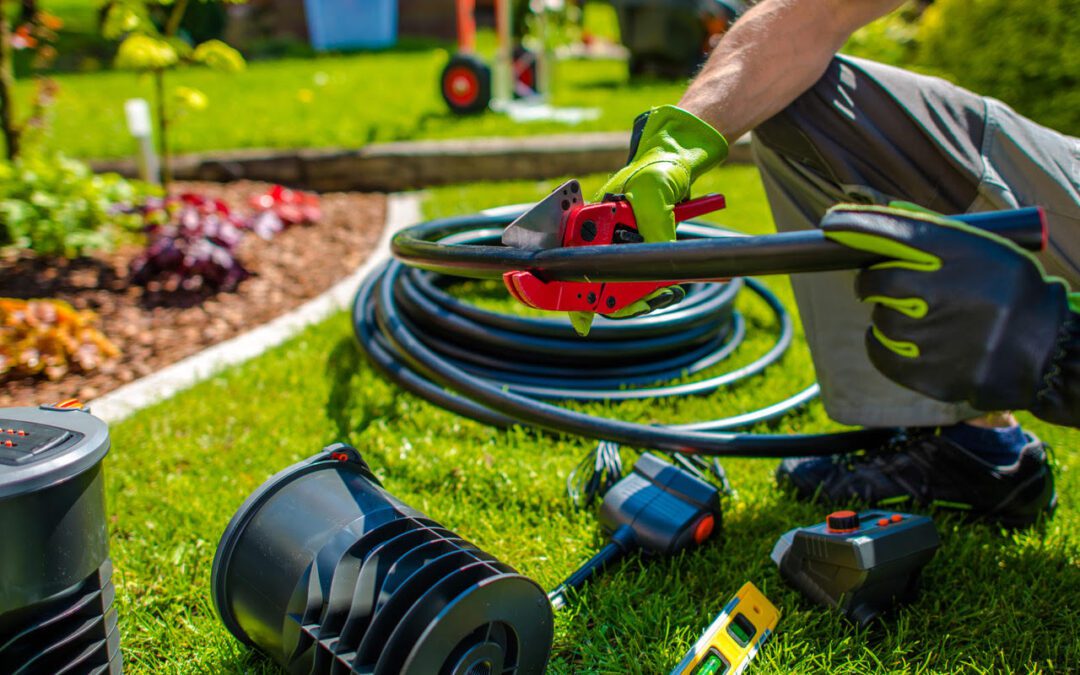
 Service Contract
Service Contract
 Need Help?
Need Help?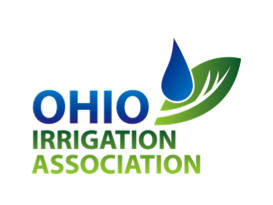

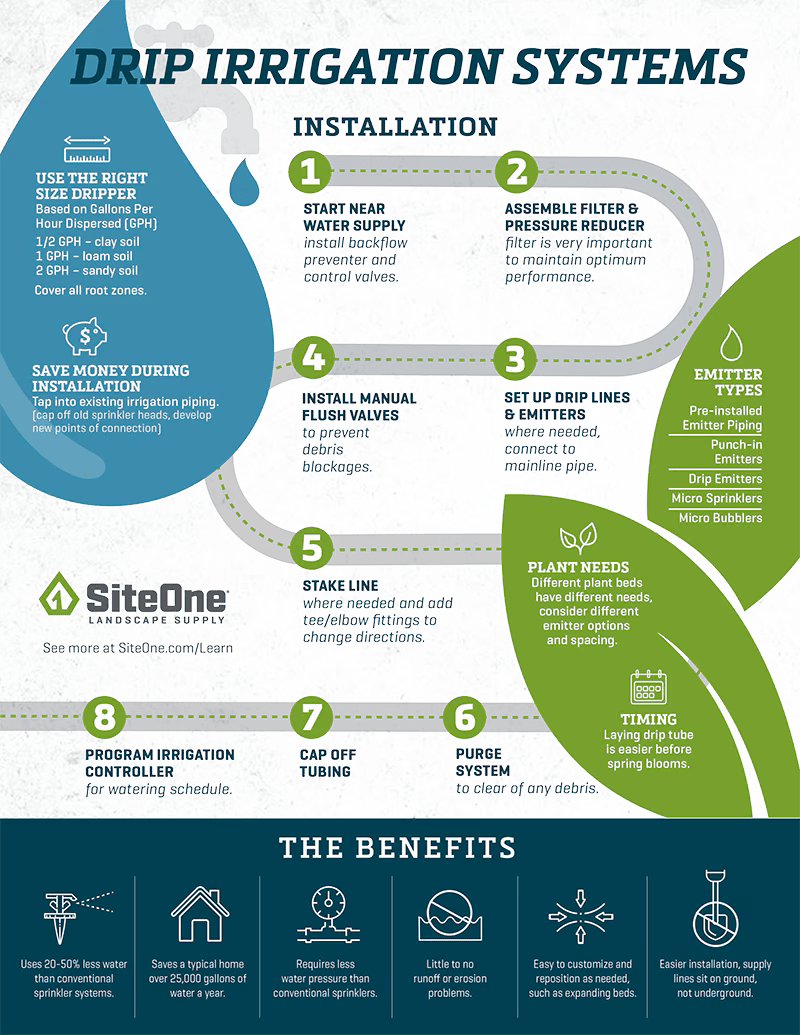


 Preventing Cyber Intrusion
Preventing Cyber Intrusion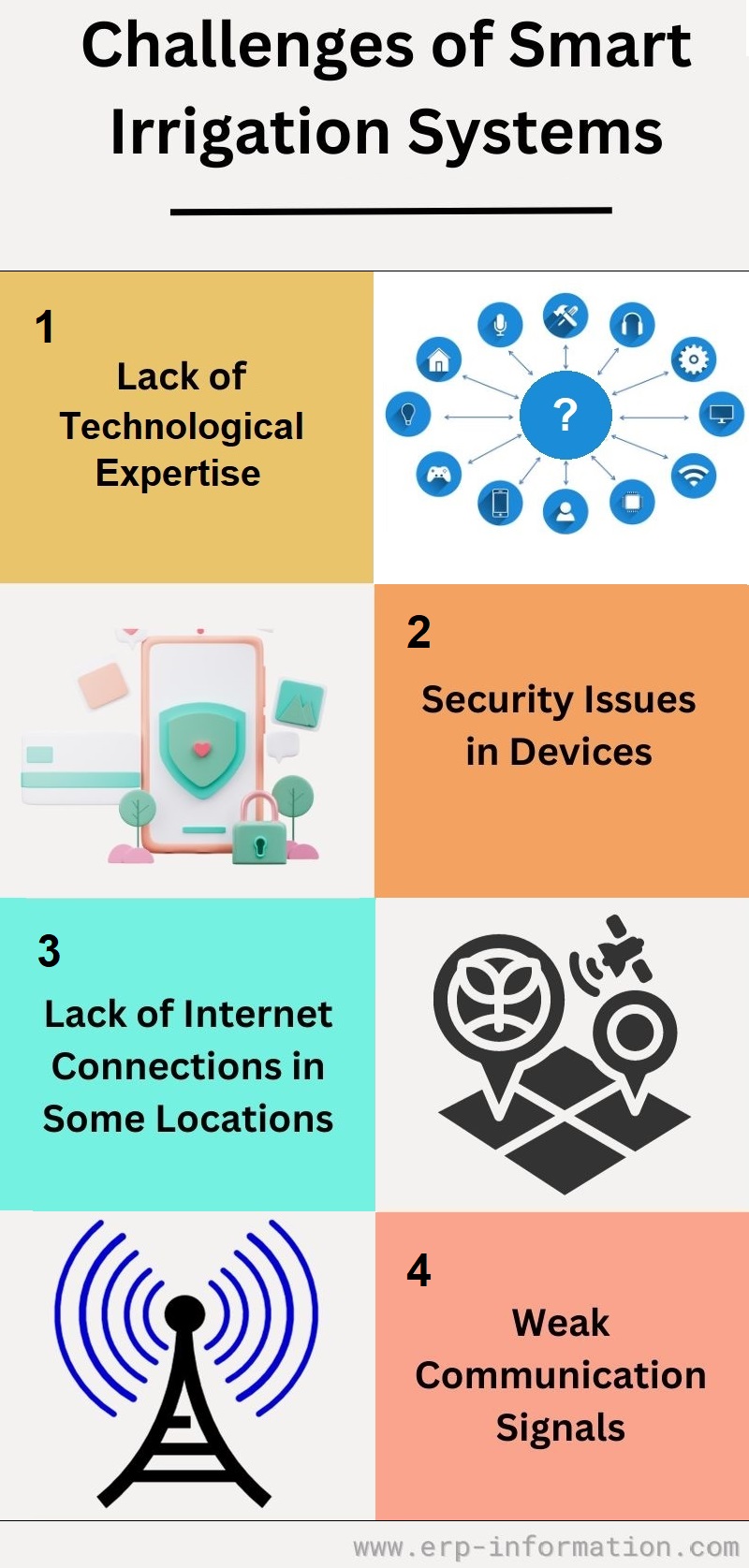

 A. Trees for the Earth
A. Trees for the Earth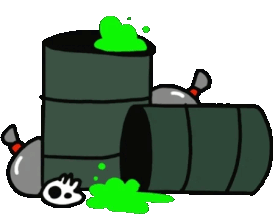 A. The Exxon Valdez oil spill
A. The Exxon Valdez oil spill A. 2003
A. 2003

 Strike While the Iron Is Hot
Strike While the Iron Is Hot

 Staying Fit Indoors
Staying Fit Indoors

 Peer Review
Peer Review



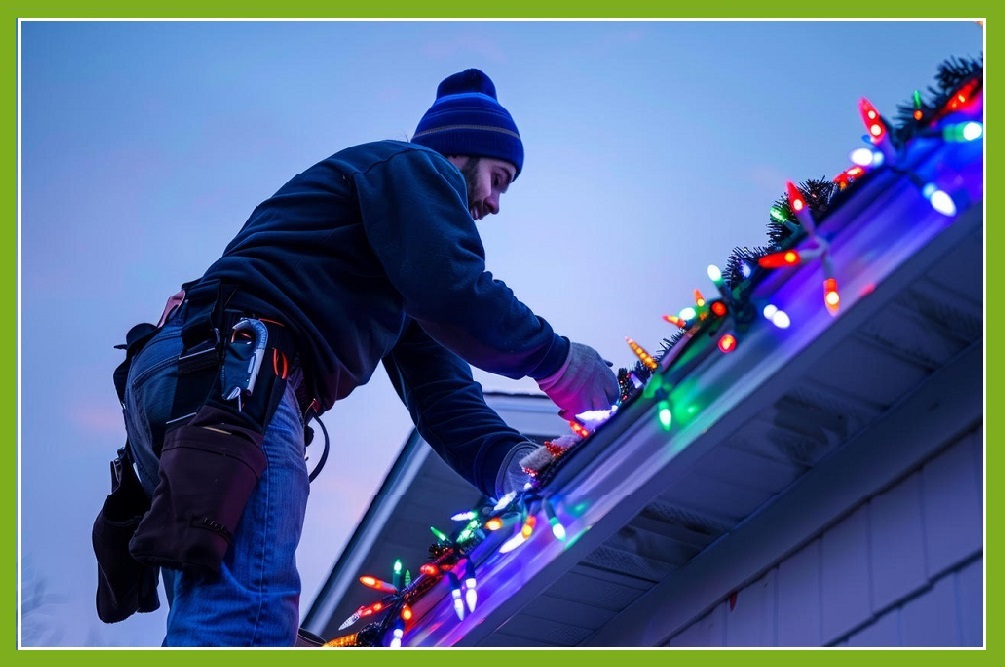
 Landing the Client
Landing the Client
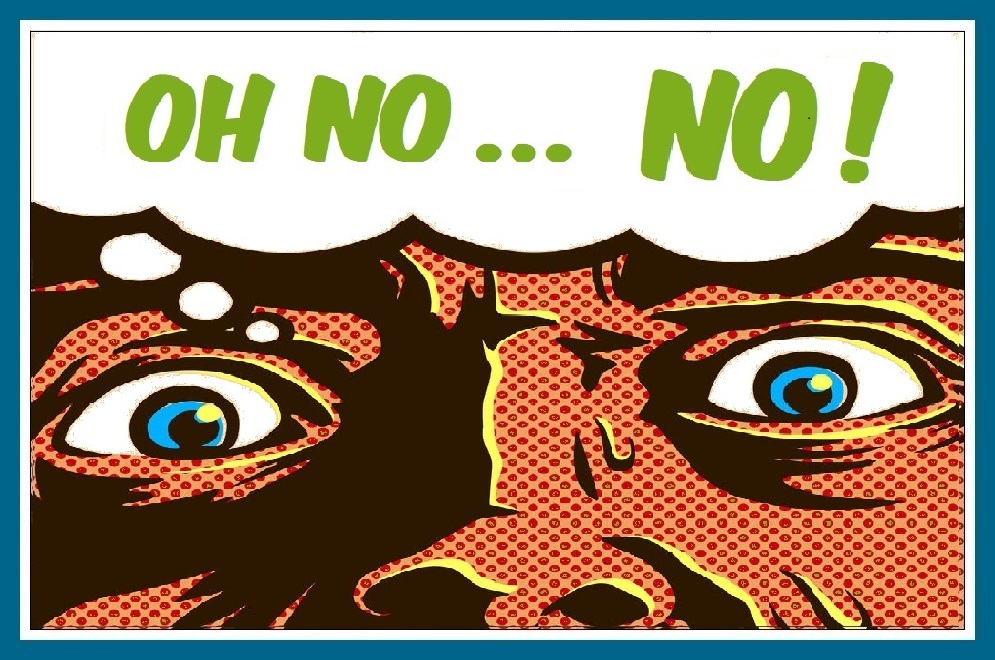
 Chilling Words
Chilling Words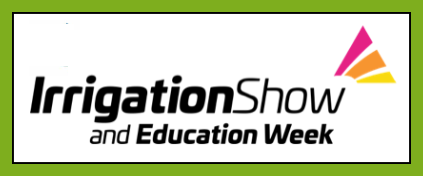 The world’s l
The world’s l

